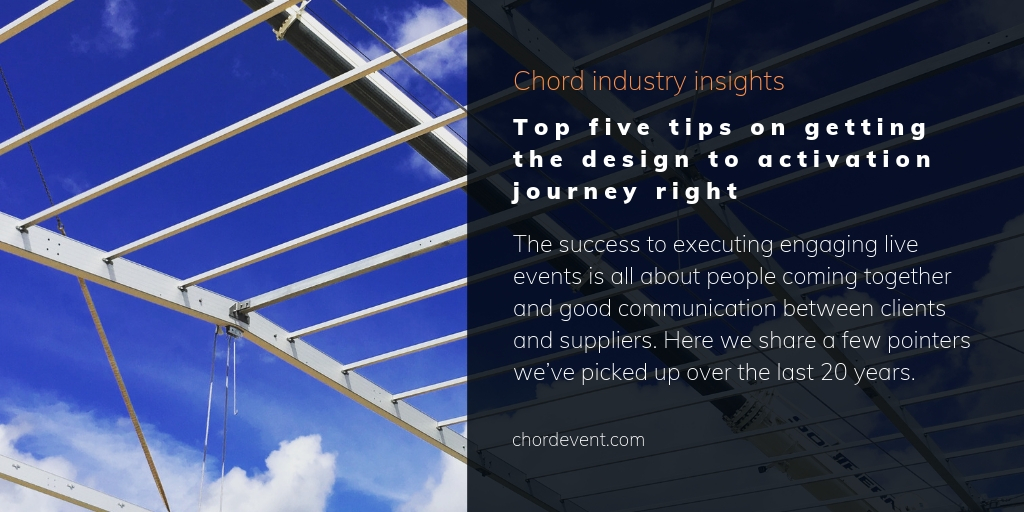TOP FIVE TIPS ON GETTING THE DESIGN TO ACTIVATION JOURNEY RIGHT
At Chord we believe in the power of effective teamwork to drive a successful project.
There are many different components to executing engaging live events and so much potential risk for the client’s brand. It’s all about people coming together and good communication between clients and suppliers. We aim to work as an extension of our client’s team and are as invested as they are.
We share the burden, share the stress and share the pride once we go live. Here are a few pointers we’ve picked up over the last 20 years:
1. In the starting blocks
The full team of creative, production and relevant suppliers should be involved from the initial design concept stage, through to engineering principles to test the robustness and practicality of the design. Being tripped up late in the day that the creative design can’t work in practice can cause delays that you can’t afford and potential for additional unexpected costs for in having to go back to the drawing board.
2. Testing testing
If timing permits, it is always ideal to arrange a test build to bring the project to life and iron out any potential issues. We’ve found that clients find this helpful in pushing the creative envelope and can make any adjustments and improvements ahead of the event. Time on site is finite and the more you can do in advance, the smoother the installation.
“We share the burden, share the stress and share the pride once we go live”
3. Regular updates and open communication
Once all parties are happy with the direction of the project, it’s all systems go. The structure supplier will then work with the production team and their own sub-contractors through the requirements, key milestones, logistics, H&S filing requirements and dealing with last minute changes and updates. Depending on the lead time, weekly fixed calls are helpful to keep momentum and make sure everyone is on the same page.
4. Finally on site
Once on site and the event starts to come together, it’s essential that all parties are in regular contact to ensure the build is meeting requirements. A client onsite visit should be scheduled ahead of handover.
5. A smooth handover
Once all checks are cleared, we will then hand over the structure to the client representative with a sign off sheet to confirm the structure has been built in accordance with the relevant regulations. This is a formal requirement, so should be built into the deliverables.


